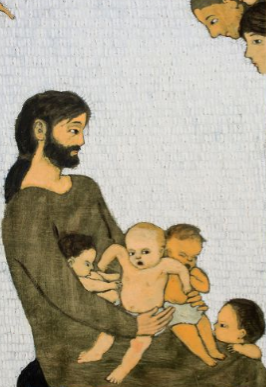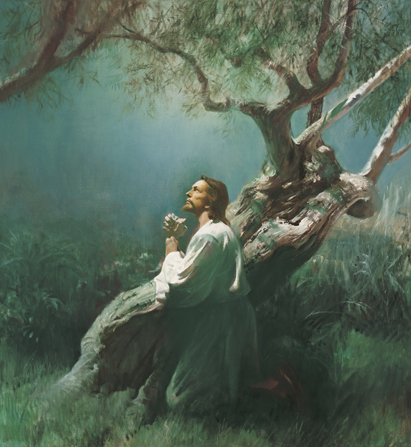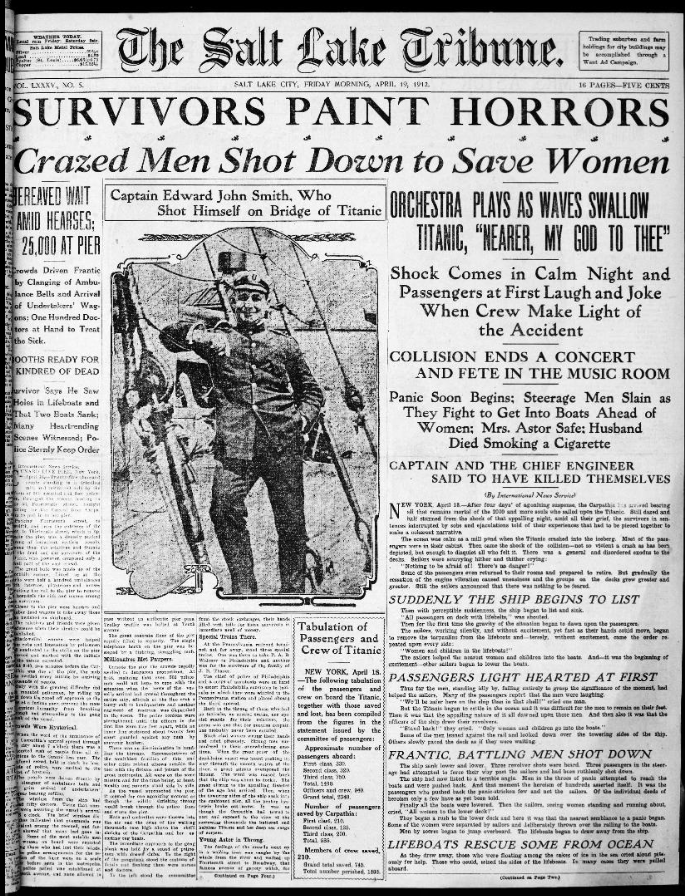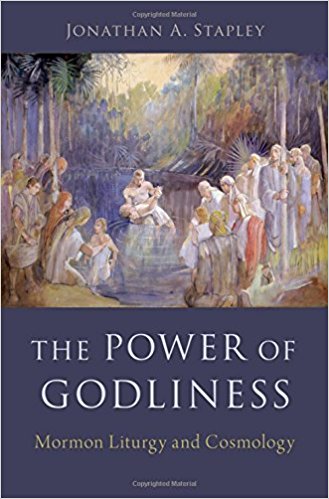-
•
•
13 responses
There’s no doubt that the three kingdoms in D&C 76 have terminology related to 1 Cor 15. However the tendency of Mormons to read 1 Cor 15 in terms of D&C 76 is unfortunate. While they’re related somewhat they’re ultimately addressing very different topics. 1 Cor 15:39-44 is about the nature of resurrected bodies. D&C 76 is about the kingdoms and who is in them. That’s somewhat tied to resurrection since one goes to a kingdom after the resurrection but we should keep the two somewhat separated. Read More
-
•
•
56 responses
Over at Wheat and Tares there was an interesting post on neo-apologetics. I’ll admit that this is one of these terms, like neo-orthodoxy back in the 90’s, that just seems inherently problematic as used. Having been “accused” of being a neo-apologist before let me try and discuss what I think people mean and why it’s somewhat problematic.[1] Read More
-
•
•
19 responses

The Court of Justice of the EU just ruled that Jehovah’s Witnesses must obtain consent from people before they take down their personal details during door-to-door preaching in order to comply with EU data privacy rules. See here the Reuters press note and here the more detailed European Court’s press release. It will obviously also apply to Mormon missionaries. The implementation as such seems simple: whenever missionaries make a promising contact, and want to record name, address and other data, they should ask permission. But how to record that permission since proof may be needed at a later date? On a written form with… Read More
-
•
•
6 responses

It’s my pleasure to share here a guest post from my friend Samuel Morris Brown. By inclination, I’m something of a misanthrope. I’m not sure where I came by this trait. Maybe it’s good old-fashioned nature, some mixture of a thousand different genes that makes me by default uninterested in other human beings. Maybe I’ve got something wrong with my hippocampus or superior temporal sulcus, too many or too few synapses in my brain. As a pretentious teenager, I wondered whether I was a (non-violent, non-criminal) sociopath because I felt so little engaged in the world of people. That imaginary… Read More
-
•
•
4 responses
The 20th Fair Mormon Conference will be August 1-3 at the Utah Valley Convention Center. If you’re not able to go they’ll provide streaming of the presentations. Read More
-
•
•
13 responses
This past May, I went to see Jana Riess present her recent research on Mormon Millennials at the Miller Eccles Study Group here in Texas. One of the most interesting (and disturbing) bits of information was her finding regarding Mormons’ opinions about the priesthood/temple ban. As she summarizes online, The 2016 NMS asked whether respondents felt that the ban on members of African descent was “inspired of God and was God’s will for the Church until 1978.” Respondents were given a five-point scale of possible responses, with the upshot being that nearly two-thirds of self-identified Latter-day Saints say they either… Read More
-
•
•
8 responses
As a first order approximation, we frequently describe a covenant as a two way promise often with consequences attached if one breaks ones promise. That almost sounds like a contract. So what exactly is the difference between a contract and covenant? Read More
-
•
•
39 responses
Recently, the Church of Jesus Christ of Latter-day Saints announced that they were going to prepare a new hymnbook and children’s songbook for use in the worldwide Church. Specifically, the goal is to create unity in hymn numbers and selections that reflect the needs of a global organization. This is the first time in over thirty years that the official hymnbook for the Church has changed, and it is a matter of no small excitement for Mormon musicians and general membership. The current hymnbook is wonderful, but change can always bring new opportunities and improvements. Part of the excitement is… Read More
-
•
•
We are delighted to welcome guest blogger Chad Nielsen to Times and Seasons. Chad’s three great intellectual passions in life are science, history/religious studies, and music. He has pursued a career in biotechnology, but maintains an active interest in both of his other passions on the side. Chad is a four-time winning contestant in the Arrington Writing Award competition held at Utah State University for his essays on Mormon history and has presented at the Logan Institute of Religion scholar’s forum and the annual meeting of the Society of Mormon Philosophy and Theology. He is a faithful Latter-day Saint who… Read More
-
•
•
7 responses
Some of the places I love the most in the Holy Land are the churches dedicated to women. My favorite is the Duc In Altum in Magdala on the shore of Galilee. It is a lovely Catholic chapel overlooking the Galilee and dedicated to the women of the New Testament. In one room is a particularly magnificent painting of the woman touching the hem of Jesus’s robe, and this may be my favorite place in all the Holy Land. I can’t think of a place more suited for pondering on what it means to be a daughter of God. I… Read More
-
•
•
2 responses
We’re happy to present Kurt Manwaring’s interview with Benjamin Park. He’s a professor of history at Sam Houston University and has been a visiting fellow at the Maxwell Institute. He just had published American Nationalisms: Imagining Union in the Age of Revolutions. He’s been working on research on the political culture of Nauvoo in the 1840’s. You can read the full interview with Ben at 12 Questions. We’re including some relevant excerpts here that hopefully will engender some discussion. I’ll add some comments at the end. Read More
-
•
•
16 responses
We’ve been in Jerusalem long enough to be able to spend time with pilgrims of varying denominations from all over the world. I personally love the concept of pilgrimage. I love being able to find the spiritual world within the material one, and I love how it brings people together through a special kind of worship; because while there are many beliefs and traditions that make the groups of people we’ve met fascinatingly different, there are important ways that we are similar. One of these is that we believe that somehow in coming here we will find something of Christ… Read More
-
•
•
4 responses

Times and Seasons is excited to welcome our newest guest blogger, Mary E. Grey, who will be writing a series of posts from her current home in Jerusalem. Read More
-
•
•
104 responses

I think one of the many social changes we’re seeing unfolding before us is the loss of sin. I don’t mean loss in the good sense of moving away from sin. Rather I mean loss in the sense that the very category of sin is rejected and rendered incomprehensible. Much of Mormon proselytizing depends upon a shared sense of sin. That is that sin is something to overcome and the atonement is the answer. Without a notion of sin it is simply much harder to see what the point of Jesus or the atonement even is. Read More
-
•
•
2 responses

We’re happy to present Kurt Manwaring’s interview with Gary Bergera. This is cross-posted here and at the 12 Questions site. Gary Bergera, for those not already familiar with him, is the editor of the recently released Confessions of a Mormon Historian: The Diaries of Leonard J. Arrington. Read More
-
•
•
34 responses
As more or less self-appointed wedding-specialist I simply had to watch the “wedding of the year”, between the British prince Harry and the American actress Meghan Markle. And what a splendid event it was, a joy to watch, and a rich inspiration for ‘pondering’. So let us ponder. First, it was a “real wedding” indeed, with all symbolic acts in place: the presentation of the bride – a pity the father was absent – the inner circle of family and friends, and the outer circle of the general community. The rings, the vows, the call for dissenters, all under the… Read More
-
•
•
One response
Welcome to the oft delayed sixth chapter of the once weekly reading club for Adam Miller’s Future Mormon. Hopefully we’ll get back to weekly again. For general links related to the book along with links for all the chapter discussions please go to our overview page. Please don’t hesitate to give your thoughts on the chapter. We’re hoping for a good thoroughgoing critical engagement with the text. Such criticisms aren’t treating the text as bad or flawed so much as trying to engage with the ideas Adam brings up. Hopefully people will push back on such criticism if they disagree or even… Read More
-
•
•
3 responses
Nephi’s eclectic messianism can be read as prophesying an ethical futurism. Read More
-
•
•
10 responses

I know the travails of the Salt Lake Tribune and then smaller papers like the Daily Herald in Provo and the Ogden Examiner don’t seem directly LDS related. However all these papers, along with the Deseret News, tend to cover religious topics. It’s worth discussing what’s going on. Read More
-
•
•
3 responses
In D&C 46:11 we read, “there are many gifts, and to every man is given a gift by the Spirit of God.” I’ve long taken that to mean that literally every person on earth has a spiritual gift, if they’ll hearken to the light of Christ. Often we don’t realize just how many gifts we are making use of until we’re released from a calling or if we get out of tune with the spirit. At that point skills and abilities we depended upon leave. The question is, however, whether D&C 46:11 is speaking of all people[1] or just people… Read More
-
•
•
9 responses

Like a paring knife to a grapefruit, Jonathan Stapley’s new book on the history of Mormon cosmology is slim, sharp, and swift to carve through pith, serving up elegant wedges of history. The Power of Godliness: Mormon Liturgy and Cosmology (Oxford, 2018) traces the evolution of ritual practice in Mormonism, including priesthood ordination, sealing rites, healing practices, baby blessings, and folk divination. The author’s reticence to extract neat diagrams from his findings is a virtue of the book, and any summary should be offered advisedly. Taken together, however, the chapters show a gradual migration from civic- to kinship- to church-centered… Read More
-
•
•
30 responses

In his recent world tour President Russell Nelson visited Kenya and spoke about a specific cultural custom in Kenya, the bridewealth or bride price. President Nelson called it ‘dowry’, which is technically incorrect, but that is not the issue I want to raise here. Bridewealth consists of the valuables that are transferred from the family of the groom the father of the bride, as a compensation for the loss of a woman. Dowry are the valuables a bride takes with her into her married state, often part of her inheritance, to be used by her and/or her husband. African marriages,… Read More
-
•
•
62 responses

Over at Faith Promoting Rumor G Wesley has up a post critiquing BYU’s scholarship. The main bone of contention was a talk by Elder Bednar regarding scholarship at LDS schools. Wesley responds that BYU should “first and foremost places set apart for critical thinking and the scientific method.” Read More
-
•
•
7 responses
All my life I’ve imagined the Book of Lehi—those tragically lost 116 pages—as having been written by Lehi. But the Book of Lehi was engraven on plates Read More
-
•
•
10 responses

Today I am pleased to present a guest post from a good friend of the blog, Samuel Morris Brown. I learned to cook when my wife was recovering from cancer surgery. There’s a hollowness, kindred to cancer, hungry to swallow you up when a beloved’s life is threatened. I still remember, with a soul-deep ache, that time when her body was a battleground for scalpeling surgeons and monstrously deformed cells. Those harrowing days are a distant memory now, but that fulminant awareness of her mortality still haunts me. I’ve seen a lot of death in my short life; nothing disoriented… Read More
-
•
•
8 responses
This post is part of a series of reflections on I Nephi. If you’re interested, the introduction to the series is here. To peruse earlier entries, click the authors tab at the top of the page and then click on my name. I welcome your own thoughts on these specific verses (or on my reflections) in the comments below. * * * * I Nephi 18:23-19:1 They arrive at the promised land. They pitch their tents. I can’t help but picture elation and Hollywood scenes of the family kneeling to kiss wet sand as water rolls over their feet. They made it!… Read More
-
•
•
61 responses

This post is about ritual, not doctrine, so it is about the form of worship, not its theology. I will use the word ‘ritual’ for all formalized forms of worship, Mormon and other, even if we use ‘ordinances’ in our own ‘Mormonese’, but ‘ritual’ is the generally accepted term. Rituals are important since as symbols in action they are ‘sticks to lean on in worship’. In the Mormon church we have quite some rituals, like the sacrament, prayers, testimony bearing, baptism, laying on of hands, administering, and of course the temple is a house full of rituals. My thesis in… Read More
-
•
•
34 responses
The term “prosperity gospel” describes an execrable set of ideas in American Christianity, chiefly that wealth is a marker of righteousness, and that believers can ensure material wealth and prosperity through spiritual practices. But “prosperity gospel” is often applied to a much broader set of beliefs Read More
-
•
•
10 responses
You’ve probably noticed I’ve not been around much of late. I was fighting off a case of the flu which seemed to be persisting a tad long. I figured it might be a secondary lung infection as I was also having fevers at night. I went to the local Instacare expecting to pick up an antibiotic prescription. Much to my shock, I had an infection but not in my lungs. It was in my heart. Read More
-
•
•
2 responses
Continuing our work with the 10 Questions team, we are pleased to present Kurt Manwaring’s interview with Spencer Fluhman, Director of the Neal A. Maxwell Institute for Religious Scholarship at BYU and an editor of “To Be Learned is Good: Essays on Faith and Scholarship in Honor of Richard Lyman Bushman.” Manwaring and Fluhman cover a wide range of topics during their discussion, which is well worth reading in full. A couple of highlights that stood out to me include Fluhman describing the mission of the Maxwell Institute: The Institute is a research unit dedicated to religious topics but defined in particular… Read More
